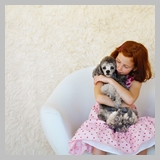Dogs greeting dogs – how to have a successful encounter

In a perfect world, our dogs would always be thrilled to encounter other animals, but we know that things are not always that easy. I work with many dogs that are rescues that have social anxiety issues. They need time to adjust and learn that the world is not a scary place. It does not help when people let their animals and children run up to these scared, confused souls.
You have the responsibility to not only keep your dog safe but also to prevent injury to other dog and their owners.
How to ensure successful encounters
The most important part is to let your dog know that you are stable leader that he can count on you to protect him during trying times. Watch how wolves work together. When something threatens their pack the leader steps to the front and takes charge of the situation. The pack knows that he has the situation under control and this gives them stability and peace of mind. You can do the same for your dog.
- When working with a reactive or scared dog, be aware of your surroundings. If you see a dog off leash , calmly move away from the situation. Turn and walk away if you have time.
- If this is not possible, remember not to get tense and nervous. Your dog will feed off your emotions and body language. Dogs take their cues from humans, if you remain calm it helps them to remain calm.
- Tightening up on the leash, waving your arms or screaming will only exacerbate the situation. This tells your dog that something is really wrong. Keep your leash loose and calmly step in front of your dog.
- Let the offending dog owner know that your dog is not friendly with other pets. Use a commanding voice but do not sound panicked or shrill.
- If the dog continues to approach put your hand out in the stop position, step forward one or two paces and say, STOP or BACK in a deep, calm commanding voice.
- If all else fails and the dog approaching is aggressive, and you cannot stop the attack from happening then DROP YOUR LEASH. Your dog will fall back on his natural instinct of flight or fight. Holding your leash will only hinder your dog from being able to get out of the situation or protect himself. Immediately call 911. There are leash laws in most states and the offending owner should have a chance to learn about them.
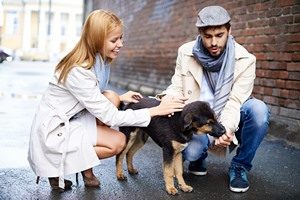 ou’re walking down the street and see a man taking a stroll with his charming puppy. Do you know the proper greeting etiquette?
ou’re walking down the street and see a man taking a stroll with his charming puppy. Do you know the proper greeting etiquette?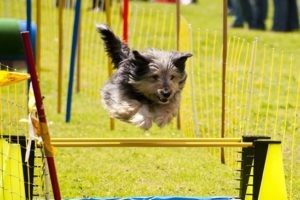 Structured play is a great way to deepen your bond with your pet, reinforce positive behaviors and exercise your pet’s brain. While the games below are written to be dog-specific, they actually can work well with cats, too!
Structured play is a great way to deepen your bond with your pet, reinforce positive behaviors and exercise your pet’s brain. While the games below are written to be dog-specific, they actually can work well with cats, too!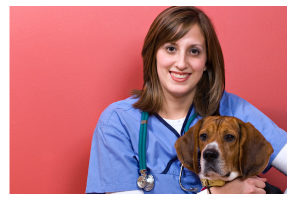 Much like the quest for the “right” human doctor, finding a veterinarian that you trust is a critical pet owner task. If you like your veterinarian (and how the vet’s office operates), you will be more likely to keep up with annual checkups and vaccinations, and you will be more likely to seek advice if your pet develops new symptoms.
Much like the quest for the “right” human doctor, finding a veterinarian that you trust is a critical pet owner task. If you like your veterinarian (and how the vet’s office operates), you will be more likely to keep up with annual checkups and vaccinations, and you will be more likely to seek advice if your pet develops new symptoms.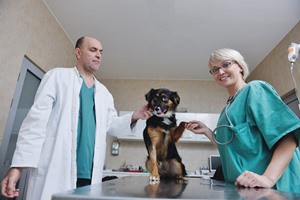 If you lose faith in your veterinarian or get a bad vibe, the good news it that it is easier to switch your vet than it is to switch your human doctor. Try not to feel guilty if this happens to you, there is no one-veterinarian-fits-all mandate.
If you lose faith in your veterinarian or get a bad vibe, the good news it that it is easier to switch your vet than it is to switch your human doctor. Try not to feel guilty if this happens to you, there is no one-veterinarian-fits-all mandate. r own dinnerware. So many designer patterns and just fun bowls to choice from that making a decision can be difficult. Choose a bowl based on your dog’s needs.
r own dinnerware. So many designer patterns and just fun bowls to choice from that making a decision can be difficult. Choose a bowl based on your dog’s needs.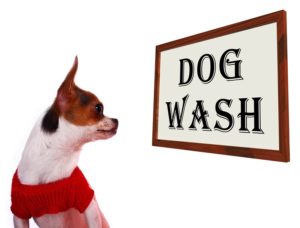 Grooming is a very important part of your dog’s life. Learning young to tolerate bathing, clipping their nails and brushing their coats and teeth is essential to long term health and well being. With a few simple supplies and some patience and effort on your part grooming can be enjoyable for you and your new friend.
Grooming is a very important part of your dog’s life. Learning young to tolerate bathing, clipping their nails and brushing their coats and teeth is essential to long term health and well being. With a few simple supplies and some patience and effort on your part grooming can be enjoyable for you and your new friend.